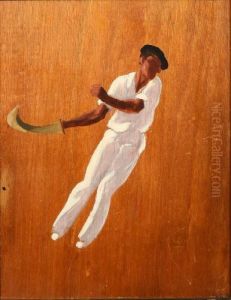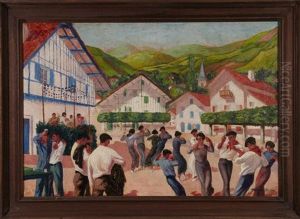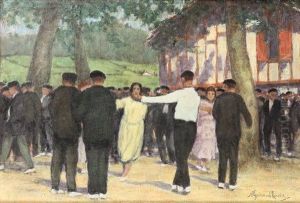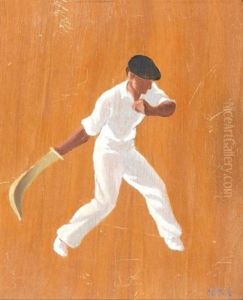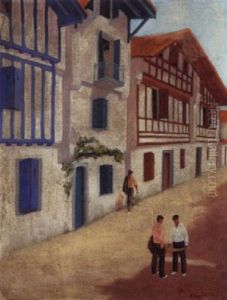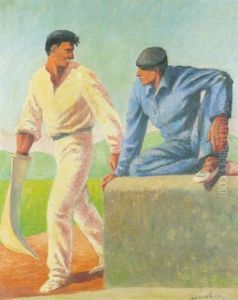Maurice Guiraud-Riviere Paintings
Maurice Guiraud-Rivière was a French sculptor and artist known for his Art Deco style, which flourished during the 1920s and 1930s. Born on February 22, 1881, in Toulouse, France, he developed an early interest in art and subsequently moved to Paris to pursue his passion. Guiraud-Rivière was a student at the École des Beaux-Arts where he honed his skills under the tutelage of renowned sculptors like Alexandre Falguière and Antonin Mercié.
His work often depicted figures in motion, capturing the dynamism and elegance of the human form. He was particularly adept at sculpting athletes and dancers, and his works often portrayed the energy and grace of these subjects. Guiraud-Rivière also sculpted a number of decorative objects, such as vases and lamps, which were in high demand during the height of the Art Deco movement.
Throughout his career, Maurice Guiraud-Rivière exhibited his work at various salons and exhibitions. He received recognition and accolades for his artistic contributions, including participation in the Salon des Artistes Français, where he was a regular exhibitor. His sculptures are characterized by smooth surfaces, stylized features, and an emphasis on form rather than detail, which was typical of Art Deco aesthetics.
Guiraud-Rivière's work was not limited to sculpture; he also produced a body of work in medals and reliefs. During World War I, he produced a series of patriotic medallions which were highly regarded. His ability to capture the spirit of his time while maintaining a timeless quality to his work secured his place in the annals of French art history.
Maurice Guiraud-Rivière passed away on May 27, 1947, in Paris. Although he may not be as widely known as some of his contemporaries, his work continues to be appreciated by collectors and art enthusiasts who value the elegance and craftsmanship of Art Deco sculpture. His pieces can be found in museums and private collections around the world, serving as a testament to his artistic legacy.
